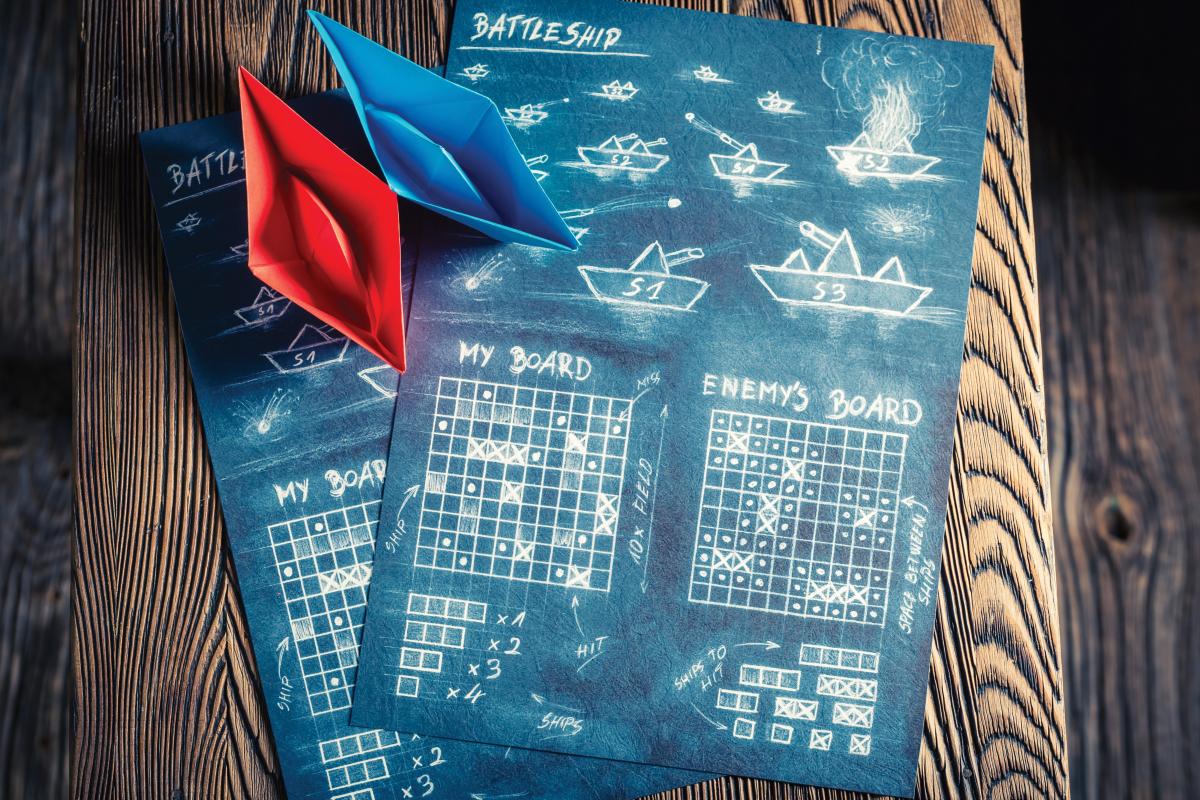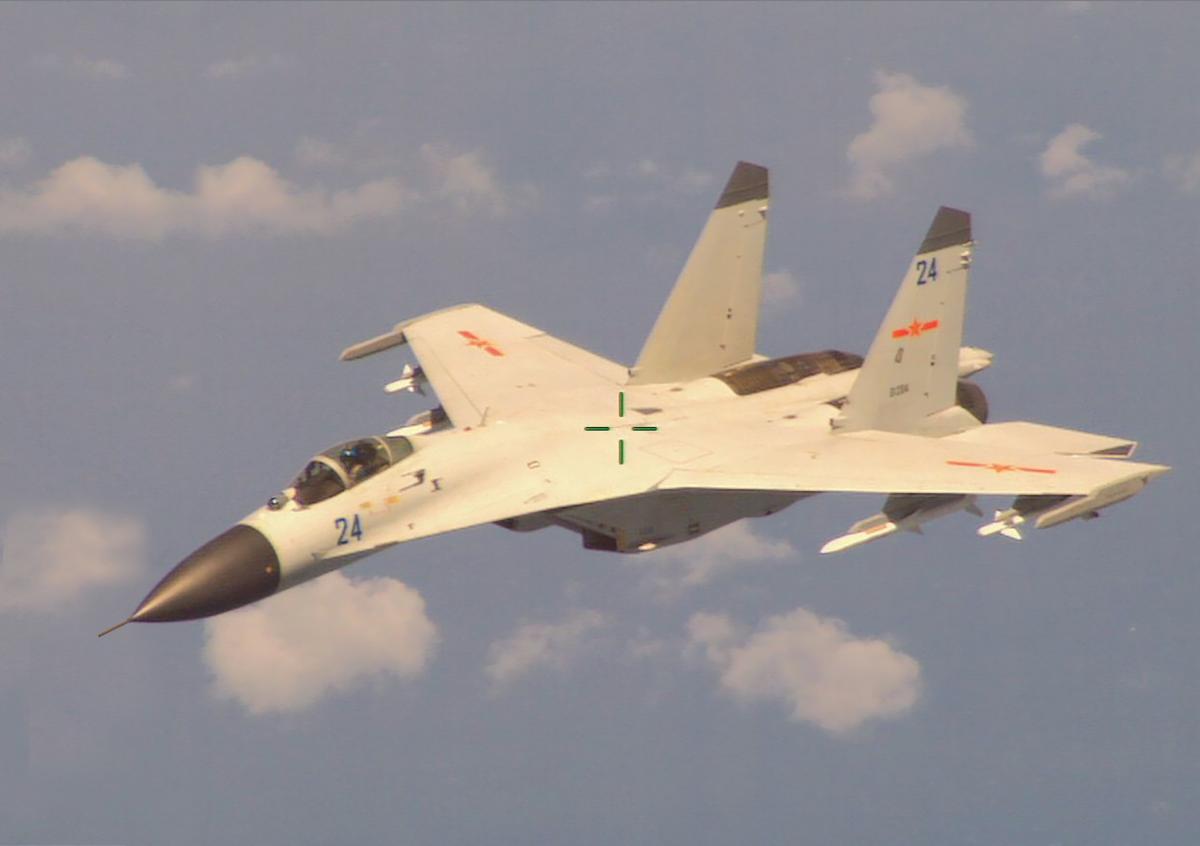Consider these significant military interactions involving China and what they have in common:
- In the South China Sea, beyond any state’s territorial sea, five Chinese vessels surround a U.S. Navy survey ship, with two of China’s maritime militia boats crossing its bow at close range and forcing an emergency all-stop to avoid collision. A Chinese intelligence collection ship radios the U.S. ship to leave the area or “suffer the consequences.”1
- Over the East China Sea, in international airspace, fighter jets from the People’s Liberation Army (PLA) Air Force repeatedly intercept U.S. patrol aircraft at high speed, escort them at extremely close range for significant periods of time, and occasionally slow and pull up in front of the U.S. aircraft, forcing the U.S. pilots to take evasive actions to avoid collision.2
- In international airspace near the disputed Spratly Islands, a U.S. Navy patrol aircraft receives a radio warning, “This is the Chinese Navy. Please go away to avoid misunderstanding.”3
- Off the coast of Africa, the pilots of U.S. patrol aircraft are lased on multiple occasions, by sources at or near China’s new military base in Djibouti.4
- Over the East China Sea in international airspace, the pilots of U.S. patrol aircraft are lased on at least 20 occasions by nearby fishing boats.5
- Most recently, in the South China Sea, a PLA Navy destroyer crossed the bow of a U.S. Navy destroyer at a distance of only 45 yards, forcing the U.S. warship to maneuver to prevent a collision.6
The answer is twofold: Each instance includes lawful, operational activities by U.S. military forces that China does not like. In addition, each includes the employment of tactical measures by China that create or increase risk to those operational activities. The latter issue should receive more attention, especially because it could affect the free and open international order in the Asia-Pacific region.
Tactical Risk and Geopolitical Competition
Risk is not always synonymous with threat. In industry, discussions of risk tend to focus on events or hazards that are beyond the control of the competing parties and do not necessarily factor the parties’ intent into the calculation. Yet in military doctrine, risks arise from two sources: threats and hazards.7 The former originate from “a state or non-state entity with the capability and intent to cause harm,” while the latter arise from “conditions with potential to cause harm.”
The 2017 U.S. National Security Strategy (NSS) identifies Russia and China as two states that “challenge American power, influence, and interests” by “attempting to erode American security and prosperity.” In particular, the NSS accuses China of seeking to “shape a world antithetical to U.S. values and interests,” “displace the United States in the Indo-Pacific region,” and “reorder the region in its favor.” To achieve these objectives, China is undertaking actions, including “fielding military capabilities designed to deny America access in times of crisis and to contest [U.S.] ability to operate freely in critical commercial zones during peacetime.” In the words of the U.S. National Defense Strategy, China is “undermining the international order” by “undercutting its principles and ‘rules of the road.’”
Given these conditions and what is at stake, the current presidential administration has used the NSS to announce to the world that the United States and China are in a “geopolitical competition.” This “great competition” covers the range of international relations, to include diplomatic, economic, informational, and military competition.
Operating in the Gray Zone
Military competition and war are not necessarily the same thing. The NSS acknowledges that “competition does not always mean hostility, nor does it inevitably lead to conflict.” Yet it also recognizes that U.S. competitors, including China, are “adept at operating below the threshold of open military conflict and at the edges of international law.” In countering U.S. influence and actions in the world, Beijing has exploited Washington’s predictable mind-set, acknowledging that the United States “often views the world in binary terms, with states being either ‘at peace’ or ‘at war,’ when it is actually an arena of continuous competition.”8
In the modern context, the threshold for what can trigger a state’s right of self-defense under international law and lead to an open military conflict is whether actions by another state constitute an “armed attack” or a “use of force.” There is no universal legal definition for those terms, thus the legal analysis is akin to plotting questionable actions along a continuum.
This continuum can be considered in terms of colors. On the spectrum’s “white end,” the mere existence or presence of military forces would not constitute a use of force. On its “black end,” dropping bombs, launching missiles, or landing combat forces ashore would constitute a use of force. In the middle, there is a wide range of actions, which security experts characterize as a “gray zone.”
Within this gray zone, China is undertaking activities either to advance its interests or to counter the interests of other states, including the United States. It does not take action that could directly kill or harm foreign personnel, including members of the U.S. military, such as firing weapons. Instead, it takes actions that indirectly jeopardize the lives of those foreign personnel, such as unsafe maneuvers and lasing for temporary blindness.
Using Risk as a Weapon
This questionable pattern of behavior by China begs a new label. The country’s military and militia personnel are employing specific operational tactics to achieve desired effects that favor China’s strategic objectives and interests. But instead of employing the conventional weapons of warfare, China is employing something intangible but nevertheless dangerous: risk. Simply put, China’s use of risk as a weapon may best be described as “riskfare.”
Rethinking U.S. Policy
Assuming that China’s riskfare is a reality, what does that mean for the United States? The NSS declares that geopolitical competition with China necessitates Washington “rethink the policies of the past two decades.” This must include a recalibration in thinking on the concept of risk.
In 2016, Senator John McCain, then chairman of the U.S. Senate Armed Services Committee, stated:
Beijing has been willing to accept a high level of risk to achieve its strategic goals. Meanwhile, the White House’s risk aversion has resulted in an indecisive and inadequate policy that has confused and alarmed our regional allies and partners. The United States must now consider fresh options to raise the costs on Beijing’s behavior. Shaping rather than reacting to Beijing’s actions will mean adopting policies with a level of risk that we have been unwilling to consider up to this point.9
While not expressly framing the discussion in terms of China using risk as a weapon, McCain clearly recognized a disparity in the level of risk tolerance between Beijing and Washington. That is not to say the current administration should be searching for risk, but rather the United States should increase its willingness to do more to protect its security interests, even if that means additional exposure to risk.
Moreover, Washington must scrutinize Beijing’s purported commitment to operational safety in the oceans and airspace of the Asia-Pacific region. Contemporary international relations theory says that competing states can cooperate with one another on matters in which they have converging interests. One of the recurring talking points in relations between the United States and China has been that they share an interest in ensuring that an operational misunderstanding does not escalate into a crisis.
Three years ago, the two states’ militaries concluded a memorandum of understanding for safety of air and maritime encounters to “contribute directly to risk reduction.”10 Similar words repeatedly have been expressed, so one might conclude that this is true for both countries. But what if the United States had an interest in reducing the risk of miscalculation or misunderstanding, while China perceived incident avoidance as a U.S. center of gravity that it could exploit? If so, what if China’s participation in such joint statements was a deliberate reminder to the United States about the U.S. interest in avoiding a collision or other unsafe incident, but China was willing to incur such risk of escalation if it would influence U.S. behavior in China’s favor? It is difficult to know China’s intent. Yet a pattern of behavior of crossing bows, close-in air intercepts, lasing pilots, and other use of riskfare calls into question Beijing’s interest in operational safety and avoiding escalation. Washington should be willing to question Beijing’s veracity and call on it to prove that the tactical actions by China’s military and maritime militia are not part of some greater, strategic effort.
Finally, Washington must be ready, willing, and able to take action to counter China’s riskfare. The NSS exhorts the United States to “raise [its] competitive game to meet [China’s] challenge, to protect American interests and to advance [U.S.] values.” Meeting this challenge requires U.S. responses at multiple levels. At the tactical level, the U.S. military force should rapidly develop countermeasures that mitigate the effects of China’s employment of riskfare. This appears already to be occurring in some situations, such as the U.S. military’s decision to equip its pilots with helmet visors that neutralize the effects of lasers.11 At the policy level, Washington should continue to officially notify Beijing about riskfare incidents, just as it has diplomatically protested unsafe behavior by China’s military ships and aircraft in the past. In future diplomatic protests, however, the United States must not only warn Beijing to ensure its military, militia, and civilian personnel discontinue the use of riskfare tactics within a specified time frame, but also make clear that U.S. forces can and will take responsive action toward individuals, vessels, and aircraft that employ riskfare—in self-defense or as a countermeasure.12
China and the United States are engaged in geopolitical competition. Yet unlike the geopolitical board game “Risk,” what China is undertaking is not about fun and games. It is a serious situation, involving risk to human lives. Given that Beijing initiated the employment of riskfare, Washington should make it clear that China assumes the risk for what it has started.
1. Fox News, “Pentagon Statement on Chinese Incident with U.S. Navy,” 9 March 2009, www.foxnews.com/politics/2009/03/09/raw-data-pentagon-statement-chinese-incident-navy.html.
2. Ryan Browne and Barbara Starr, “Chinese Fighter Jet Performed ‘Unsafe’ Intercept of U.S. Navy Plane,” CNN, 24 July 2017, https://www.cnn.com/2017/07/24/politics/chinese-jet-intercept-us-navy-plane/index.html.
3. Jim Sciutto, “Exclusive: China Warns U.S. Surveillance Plane,” CNN, 15 September 2015, www.cnn.com/2015/05/20/politics/south-china-sea-navy-flight/index.html. Similarly, near the Spratly Islands, on 46 occasions over a six-month period, China radioed Philippine patrol aircraft and ships and warned, “Leave immediately and keep off to avoid misunderstanding.” Jim Gomez, “Philippines Raises Concern over Chinese Radio Warnings,” Associated Press, 31 July 2018, www.apnews.com/c447e23e914d4a689e4f29c773efbdab.
4. Paul Sonne, “U.S. Accuses China of Directing Blinding Lasers at American Military Aircraft in Djibouti,” The Washington Post, 4 May 2018, www.washingtonpost.com/news/checkpoint/wp/2018/05/03/u-s-accuses-china-of-directing-blinding-lasers-at-american-military-aircraft-in-djibouti/?utm_term=.194a881feb40.
5. Gordon Lubold and Jeremy Page, “American Military Aircraft Targeted By Lasers in Pacific Ocean, U.S. Officials Say,” Wall Street Journal, 21 June 2018, www.wsj.com/articles/american-military-aircraft-targeted-by-lasers-in-pacific-ocean-u-s-officials-say-1529613999.
6. Luis Martinez, “Chinese Warship Came Within 45 Yards of USS Decatur in South China Sea: U.S.,” ABC News, 1 October 2018, https://abcnews.go.com/Politics/chinese-warship-45-yards-uss-decatur-south-china/story?id=58210760.
7. LTG William C. Mayville Jr., USA, “Chairman of the Joint Chiefs of Staff Manual 3105.01,” 14 October 2016, www.jcs.mil/Portals/36/Documents/Library/Manuals/CJCSM 3105.01%C2%A0.pdf?ver=2017-02-15-105309-907.
8. “National Security Strategy of the United States of America,” 28 December 2017, www.whitehouse.gov/wp-content/uploads/2017/12/NSS-Final-12-18-2017-0905.pdf.
9. Hearings before the Senate Armed Services Committee on S. 2943, S. Hrg. 114-658 (2016), www.gpo.gov/fdsys/pkg/CHRG-114shrg26098/html/CHRG-114shrg26098.htm.
10. “Memorandum of Understanding between the Department of Defense of the United States of America and the Ministry of National Defense of the People’s Republic of China Regarding the Rules of Behavior for Safety of Air and Maritime Encounters,” 10 November 2014, http://archive.defense.gov/pubs/141112_MemorandumOfUnderstandingRegardingRules.pdf.
11. Kyle Mizokami, “Laser Attacks against U.S. Forces Spread to the Pacific,” Popular Mechanics, 19 June 2018, www.popularmechanics.com/military/weapons/a21630374/laser-attacks-against-us-forces-spreads-to-the-pacific/.
12. “Chairman of the Joint Chiefs of Staff Instruction 3121.01B: Standing Rules of Engagement/Standing Rules for the Use of Force for U.S. Forces,” 13 June 2005, www.jag.navy.mil/distrib/instructions/CJCSI 3121.01B13Jun05.pdf. “U.N. General Assembly Resolution 56/83, Responsibility of States for Internationally Wrongful Acts,” 28 January 2002, www.un.org/en/ga/search/view_doc.asp?symbol=A/RES/56/83.






